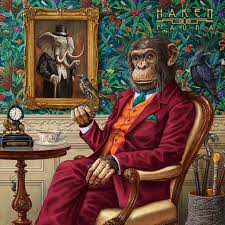Stamp: Sustainable Development Goals - 14. Life Below Water (United Nations, Offices in Geneva Switzerland 2016)
Sustainable Development Goals - 14. Life Below Water (United Nations, Offices in Geneva Switzerland 2016)
24 October (United Nations, Offices in Geneva Switzerland ) within release Sustainable Development Goals goes into circulation Stamp Sustainable Development Goals - 14. Life Below Water face value 1.00 Swiss frank
| Stamp Sustainable Development Goals - 14. Life Below Water in catalogues | |
|---|---|
| WADP Numbering System - WNS: | WAD:UN242.16 |
Stamp is square format.
Number in set - 17||(show set). Layout - miniature sheet of 17 of 17 designs. Issuing - United Nations Postal Administration. Printer - Lowe Martin Group CanadaAlso in the issue Sustainable Development Goals :
- Stamp - Sustainable Development Goals - 1. No Poverty face value 1.00;
- Stamp - Sustainable Development goals - 2. Zero Hunger face value 1.00;
- Stamp - Sustainable Development Goals - 3. Good Health and Well-Being face value 1.00;
- Stamp - Sustainable Development Goals - 4. Quality Education face value 1.00;
- Stamp - Sustainable Development Goals - 5. Gender Equality face value 1.00;
- Stamp - Sustainable Development Goals - 6. Clean Water and Sanitation face value 1.00;
- Stamp - Sustainable Development Goals - 7. Affordable and Clean Energy face value 1.00;
- Stamp - Sustainable Development Goals - 8. Decent Work and Economic Growth face value 1.00;
- Stamp - Sustainable Development Goals - 9. Industry, Innovation and Infrastructure face value 1.00;
- Stamp - Sustainable Development Goals - 10. Reduced Inequalities face value 1.00;
- Stamp - Sustainable Development Goals - 11. Sustainable Cities and Communities face value 1.00;
- Stamp - Sustainable Development Goals - 12. Responsible Consumption and Production face value 1.00;
- Stamp - Sustainable Development Goals - 13. Climate Action face value 1.00;
- Stamp - Sustainable Development Goals - 14. Life Below Water face value 1.00;
- Stamp - Sustainable Development Goals - 15. Life on Land face value 1.00;
- Stamp - Sustainable Development Goals - 16. Peace, Justice and Stong Institutions face value 1.00;
- Stamp - Sustainable Development Goals - 17. Partnerships for the Goals face value 1.00;
- Mini Sheet - Sustainable Development Goals face value ;
Stamp Sustainable Development Goals - 14. Life Below Water it reflects the thematic directions:
A fish is any member of a group of animals that consist of all gill-bearing aquatic craniate animals that lack limbs with digits. They form a sister group to the tunicates, together forming the olfactores. Included in this definition are the living hagfish, lampreys, and cartilaginous and bony fish as well as various extinct related groups. Tetrapods emerged within lobe-finned fishes, so cladistically they are fish as well. However, traditionally fish are rendered obsolete or paraphyletic by excluding the tetrapods (i.e., the amphibians, reptiles, birds and mammals which all descended from within the same ancestry). Because in this manner the term "fish" is defined negatively as a paraphyletic group, it is not considered a formal taxonomic grouping in systematic biology. The traditional term pisces (also ichthyes) is considered a typological, but not a phylogenetic classification. The earliest organisms that can be classified as fish were soft-bodied chordates that first appeared during the Cambrian period. Although they lacked a true spine, they possessed notochords which allowed them to be more agile than their invertebrate counterparts. Fish would continue to evolve through the Paleozoic era, diversifying into a wide variety of forms. Many fish of the Paleozoic developed external armor that protected them from predators. The first fish with jaws appeared in the Silurian period, after which many (such as sharks) became formidable marine predators rather than just the prey of arthropods. Most fish are ectothermic ("cold-blooded"), allowing their body temperatures to vary as ambient temperatures change, though some of the large active swimmers like white shark and tuna can hold a higher core temperature. Fish are abundant in most bodies of water. They can be found in nearly all aquatic environments, from high mountain streams (e.g., char and gudgeon) to the abyssal and even hadal depths of the deepest oceans (e.g., gulpers and anglerfish). With 33,100 described species, fish exhibit greater species diversity than any other group of vertebrates. Fish are an important resource for humans worldwide, especially as food. Commercial and subsistence fishers hunt fish in wild fisheries (see fishing) or farm them in ponds or in cages in the ocean (see aquaculture). They are also caught by recreational fishers, kept as pets, raised by fishkeepers, and exhibited in public aquaria. Fish have had a role in culture through the ages, serving as deities, religious symbols, and as the subjects of art, books and movies.
Fauna (pl.: faunae or faunas) is all of the animal life present in a particular region or time. The corresponding terms for plants and fungi are flora and funga, respectively. Flora, fauna, funga and other forms of life are collectively referred to as biota. Zoologists and paleontologists use fauna to refer to a typical collection of animals found in a specific time or place, e.g. the "Sonoran Desert fauna" or the "Burgess Shale fauna". Paleontologists sometimes refer to a sequence of faunal stages, which is a series of rocks all containing similar fossils. The study of animals of a particular region is called faunistics.
The Department of Environment and Conservation (DEC) was a department of the Government of Western Australia that was responsible for implementing the state's conservation and environment legislation and regulations. It was formed on 1 July 2006 by the amalgamation of the Department of Environment and the Department of Conservation and Land Management.


